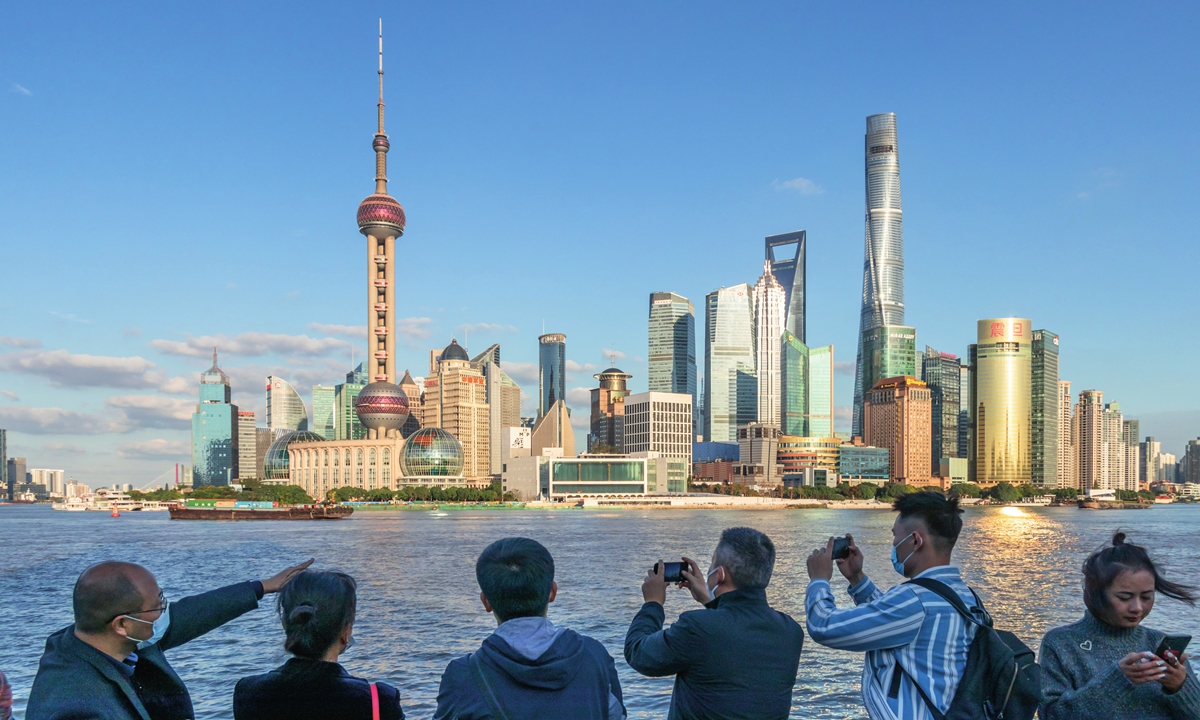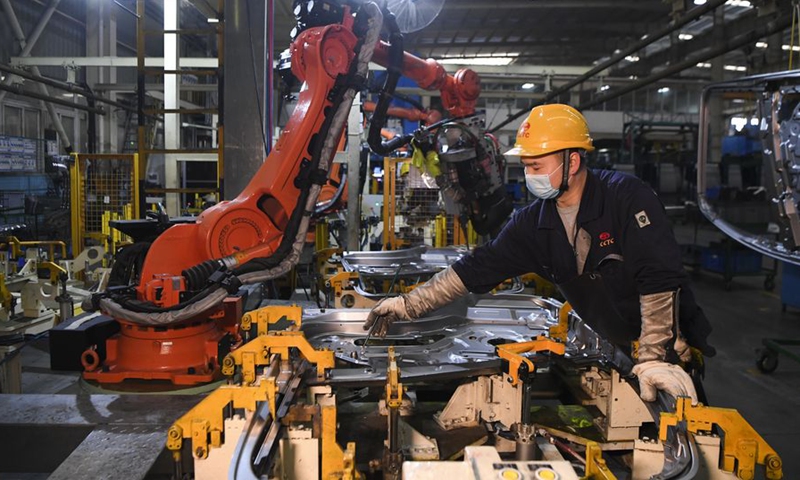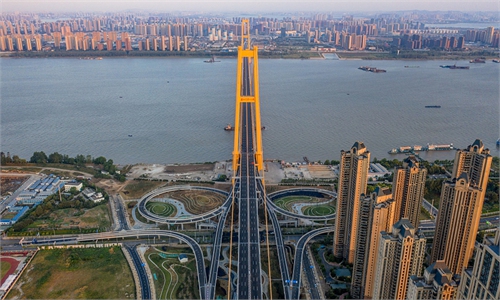Local GDP targets point to sustained recovery in 2021
Caution over COVID-19, external risks remain, despite optimistic tone: experts

Shanghai Photo: IC
Even as clusters of COVID-19 outbreaks in several places across the country renewed worry over potential disruptions to economic activities, many provinces, municipalities and autonomous regions have recently moved to continue a long-running tradition of setting an annual GDP growth target, providing further indication that the Chinese economy will remain on a sustained recovery trajectory for 2021 following the historic comeback last year.
However, while the half a dozen or so local governments, including economic powerhouses such as Beijing, Shanghai and South China's Guangdong, have set growth targets for 2021 that are substantially higher than that of 2020, cautionary sentiment over growth prospects were also palpable in some localities, with many places' growth targets are notably lower than many forecast for an around 8 percent growth for the Chinese economy.
Those cautionary tones are driven by a combination of factors, including continued risks of the resurgence of the virus not just in the country but across the world, lasting impact of the pandemic on the jobs market and consumption, lingering uncertainties over trade tensions as well as domestic economic reform goals of a high-quality and green growth, analysts noted. But solid recovery is expected in other places in central and western parts of the country, ensuring an overall positive picture for the country's recovery path, they added.
Positive outlook
While China has been tightening up anti-epidemic measures, including discouraging large gatherings, in wake of the new outbreaks of the COVID-19, many provincial level governments have held their annual sessions of their legislative and political advisory bodies over the past week or so, in keeping with a long-standing tradition, where local officials outline their own annual social and economic development priorities and goals ahead of the national "two sessions," which is expected to convene on March 5.
As of Sunday, at least half a dozen provinces, municipalities and autonomous regions have released specific numerical growth targets for 2021, with traditional economic powerhouses setting lower targets than emerging growth areas in the central and western regions. Specifically, Beijing, Shanghai and Guangdong are aiming for a growth target above 6 percent in 2021. Central China's Hubei, whose economy was hit hard by the COVID-19 epidemic, has set a growth target of above 10 percent for the year, while Southwest China's Tibet Autonomous Region setting a target of over 9 percent and North China's Shanxi over 8 percent.
"Obviously, the growth targets set by these places painted a greatly better picture for 2021 than that of 2020,"
Dong Dengxin, director of the Financial Securities Institute at Wuhan University of Science and Technology, told the Global Times on Sunday, noting that as officials have opted out of setting numerical target for national growth, the local growth targets provide a direct window into officials' view of economic growth prospect for the year. "So far, we have seen signs of confidence into the continued recovery of the economy in many of these areas."
All of the local growth targets that have been released so far are substantially higher than their growth in 2020. For example, a 10 percent growth in 2021 for Hubei would be a growth of 15 percentage points from a 5 percent contraction in 2020, while a 6 percent growth for Beijing would be 4.8 percentage points from a 1.2 percent growth in 2020.
"There is no doubt that the economy will continue on solid recovery path in 2021, as indicated in the local growth targets; however, there are also a level of caution on display in these targets," Tian Yun, vice director of the Beijing Economic Operation Association, told the Global Times on Sunday, noting that many economic powerhouses are setting notably lower targets than estimated growth for the national economy by many domestic and global institutions.

People work at the workshop of a vehicle door manufacturer in Yubei District of southwest China's Chongqing Municipality, March 11, 2020. (Xinhua/Wang Quanchao)
Cautionary sentiment
In its latest report on global economic prospects released on January 5, the World Bank forecast that the Chinese economy would grow by 7.9 percent, while other institutions expect that growth would reach as high as 8.5 percent in 2021. Both are higher than the targets set by local governments of Beijing, Shanghai and Guangdong.
"That these targets are lower than the relatively conservative forecast from the World Bank showed that many local governments are still under heavy pressure in terms of growth," Tian said, noting risks of reemergence of the virus, worsening global conditions, as well as lasting impact of the epidemic on jobs market and consumption all exert pressure on economic growth.
While the Chinese economy record a 2.3 percent growth in 2020 amid an unprecedentedly tough year supported by solid export figures, consumption - the main growth driver - remained under heavy pressure with retail sales dropping 3.9 percent year-on-year in 2020.
"For Hubei, and I think for the entire country, boosting jobs creation, increasing wages and stabilizing consumption remains the top priorities because those are the impact from the epidemic situation in 2020 that are still in play," Dong said, adding that a 10-percent growth for Hubei in 2021 would be hard to make up all losses in the province due to the COVID-19. "Some businesses are closed forever; some jobs are lost permanently; So supporting small businesses and creating new jobs are absolutely essential."
However, even as growth in major coastal export hubs and first-tier cities that are more reliance on overseas market and subject to stricter anti-epidemic efforts face some pressures, robust growth in many central and western regions that are less exposed to foreign risks and have huge growth potentials, analysts noted.
Also, some local governments may have lower their growth target to create more room for coordinating other goals, including deepening market reforms, deleveraging, as well as carrying out environmental protection policies such as cutting greenhouse gas emissions, analysts added, noting that it is line with China's overall shift away from relentless pursuit of GDP growth toward more sustainable high-quality growth.
"Some local governments may have set a reasonably lower target to better coordinate policies; but nationally, even though there is no official growth target released publicly, ensuring relatively high speed growth is key for all other policy goals," Tian said, noting that China's growth pace in 2021 could reach 8.5 percent.





